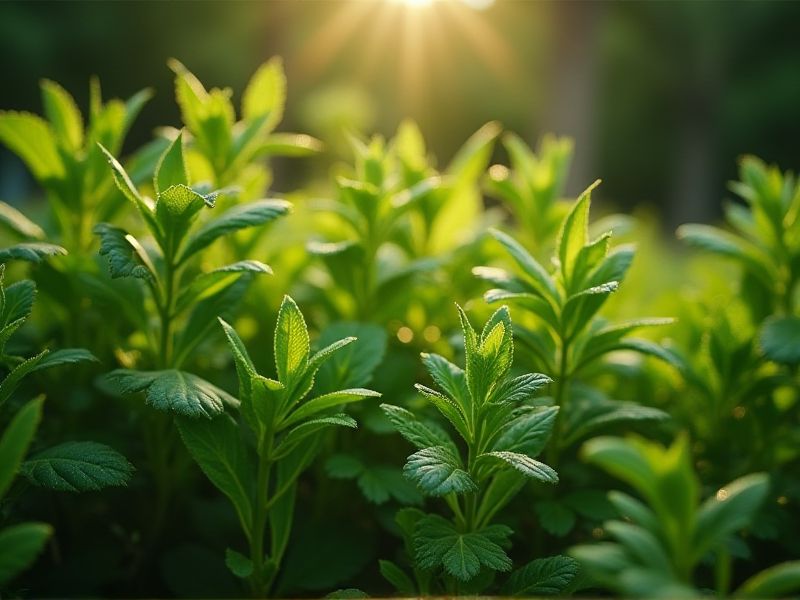
Shade plants thrive in low-light conditions, making them ideal for gardens with limited sun exposure. Examples of such plants include hostas, which feature lush foliage in various hues, and ferns, known for their delicate fronds that add texture to shaded areas. Astilbes produce stunning, feathery plumes of flowers, bringing color to your garden even in the dimmest corners. You may also consider planting heucheras, or coral bells, which offer vibrant leaf colors and withstand low-light environments well. These shade-loving plants not only enhance the aesthetic appeal of your garden but also require minimal maintenance, thriving in moist, well-drained soil.
List of some Shade plants that require little sunlight
- Hostas (Hosta spp.)
- Ferns (Various species)
- Snake Plant (Sansevieria trifasciata)
- English Ivy (Hedera helix)
- Peace Lily (Spathiphyllum spp.)
- Japanese Painted Fern (Athyrium niponicum)
- ZZ Plant (Zamioculcas zamiifolia)
- Fatsia (Fatsia japonica)
- Dumb Cane (Dieffenbachia spp.)
- Cast Iron Plant (Aspidistra elatior)
Important things about Shade plants that require little sunlight
Types Of Shade Plants
Shade plants thrive in low-light environments and are ideal for gardens or landscapes with limited sunlight exposure. Varieties such as Hostas and Ferns are well-suited for shaded areas, providing lush foliage and texture. You can also consider species like Astilbe and Bleeding Heart, which produce beautiful blooms even in the absence of direct sunlight. These plants not only enhance the aesthetic of your garden but also support local biodiversity by attracting beneficial insects.
Soil Requirements
Shade plants thrive in moist, well-drained soils enriched with organic matter. Ideal soil pH typically ranges from 6.0 to 7.0, promoting nutrient availability and optimal growth conditions. Consider incorporating compost or leaf mold to enhance soil fertility and structure, which can help retain moisture. For your shade garden, choose plants like ferns, hostas, and astilbes that not only require minimal sunlight but also flourish in the nutrient-rich, loamy soil environment.
Watering Needs
Shade plants typically thrive in environments where sunlight is minimal, making them ideal for shaded gardens or under trees. These plants often require less frequent watering compared to their sun-loving counterparts, as they retain moisture better in lower light conditions. It's crucial to monitor the soil moisture level to ensure that the plants do not become waterlogged, as excess water can lead to root rot. You should provide a gentle watering routine, allowing the top inch of soil to dry out before the next watering, ensuring your shade plants remain vibrant and healthy.
Growth Habits
Shade plants thrive in low-light environments, making them perfect for areas where sunlight is limited. Species such as hostas, ferns, and astilbes exhibit remarkable growth in shady conditions, appreciating moist, well-drained soil. These plants often have broader leaves to maximize photosynthesis in dim light, providing lush greenery and vibrant blooms even in the shadows. By choosing the right shade plants for your garden, you can create a serene and thriving landscape without relying on direct sunlight.
Pest Resistance
Shade plants such as ferns, hostas, and astilbes are known for their resilience against various pests, making them ideal for low-light gardens. These plants often possess natural defenses, including thick leaves and toxic compounds, which deter common pests like aphids and slugs. By selecting resistant varieties, you can create a thriving garden ecosystem that minimizes the need for chemical pesticides, ensuring a sustainable approach to gardening. Implementing companion planting with pest-repelling herbs can further enhance the resilience of your shade plants while promoting biodiversity.
Fertilization Tips
When caring for shade plants that thrive in low-light conditions, proper fertilization is crucial for their health and growth. Consider using a slow-release fertilizer tailored for shade-loving plants, as it provides a steady supply of nutrients without overwhelming them. You may also benefit from incorporating organic compost into the soil, enriching it with essential micronutrients while improving moisture retention. Regularly monitor the soil's pH, as most shade plants prefer slightly acidic to neutral conditions, ensuring optimal nutrient absorption for your thriving garden.
Seasonal Care
Shade plants thrive in low-light environments, making them ideal for areas where sunlight is limited. Varieties like hostas, ferns, and astilbes not only add lush greenery to your garden but also come in diverse colors and textures. You can enhance their growth by ensuring well-drained soil and providing adequate moisture, as many shade plants appreciate humidity. Incorporating these resilient species into your landscape can create a vibrant, tranquil retreat while requiring minimal sunlight to flourish.
Planting Locations
Shade plants thrive in environments where sunlight is limited, making them ideal for areas under large trees or in shadowy corners of your garden. Varieties such as hostas, ferns, and astilbes flourish in these conditions, requiring minimal direct sunlight while still providing vibrant foliage and beautiful blooms. When selecting your planting locations, ensure the soil is rich in organic matter to support these shade-loving plants. Consider incorporating ground covers like pachysandra or creeping thyme to enhance your landscape while maintaining moisture retention in low-light areas.
Companion Plants
Shade plants thrive in low-light conditions, making them ideal for gardens that receive filtered or indirect sunlight. Popular varieties include Hostas, which feature lush foliage and come in various sizes, and ferns, known for their delicate fronds and ability to flourish in damp, shady environments. Consider incorporating Heuchera, or coral bells, offering colorful leaves and beautiful blooms, while also attracting pollinators. By choosing the right shade companions, you can create a vibrant and diverse garden that maximizes your outdoor space's potential.
Common Varieties
Shade plants that require little sunlight include hostas, ferns, and astilbes, making them ideal for low-light garden areas. Hostas come in various colors and leaf shapes, thriving in rich, moist soil while adding visual interest with their lush foliage. Ferns, such as the Japanese painted fern, bring a delicate texture and vibrant colors to shaded spots, creating a serene atmosphere. Astilbes produce striking feathery plumes in shades of pink, white, or red, attracting pollinators and brightening up dark corners of your landscape.
